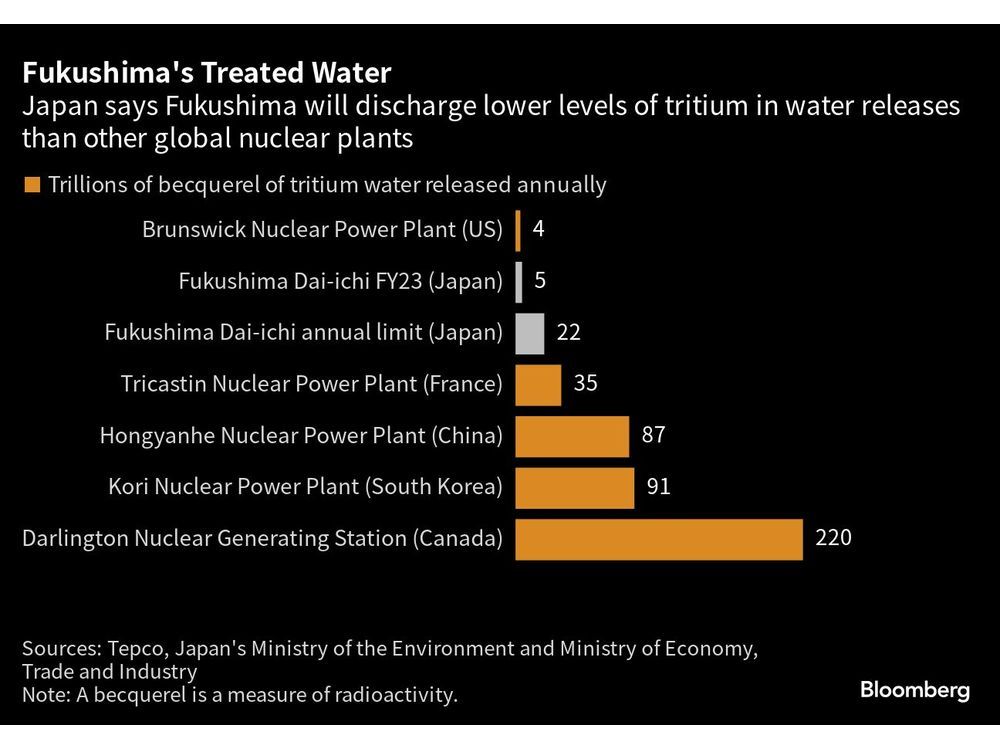
Article content
(Bloomberg) — Japan is scheduled to begin releasing treated wastewater from the Fukushima nuclear site into the Pacific Ocean later on Thursday, the first discharge in a process that could last about 30 years and has drawn threats of retaliation from China.
Prime Minister Fumio Kishida’s government and Tokyo Electric Power Co., which operates the wrecked power plant, expect to begin the initial release from about 1 p.m. local time, according to outlets including broadcaster NHK.
Article content
Read more: How Japan Will Release Its Nuclear Wastewater Into the Pacific
China and Hong Kong, major importers of Japanese seafood and agricultural products, have this week pledged to take steps to protect food safety if the discharges begin as planned. The strategy “blatantly transfers the risk of nuclear pollution to neighboring countries,” according to China’s Deputy Foreign Minister Sun Weidong.
Tepco’s first discharge will involve the release of about 7,800 cubic meters of treated water and take about 17 days to complete, according to a document posted on the company’s website. The water will contain 1.1 trillion becquerels — a measure of radioactivity — of tritium, part of Tepco’s strategy to begin the process with relatively low concentrations of the radionuclide.
Tepco has a target to discharge less than 22 trillion becquerels of tritium a year, and expects to release 5 trillion becquerels as it carries out a total of four releases of treated water by the end of March.
Safety concerns from some nations are unfounded, according to Nigel Marks, an expert on radioactive waste and an associate professor at Curtin University in Perth. Eating a lifetime’s worth of seafood from near the release site would have “the tritium radiation equivalent of one bite of a banana,” he said.
Article content
Read more: Fukushima Has a Lesson for Nuclear Renaissance: David Fickling
The International Atomic Energy Agency and Japan’s government have argued that similar releases of triated water are commonplace in the nuclear sector, and that Tepco’s proposal involves smaller discharges. A two-year IAEA review found Japan’s strategy would have a negligible impact on people and the environment.
Tepco needs to release a total of about 1.3 million cubic meters of wastewater — equivalent in volume to about 500 Olympic-size swimming pools — as a fleet of about 1,000 storage tanks are hitting capacity. The waste has been generated in part as the utility works to cool wrecked reactors following the 2011 meltdown that ranks as the world’s worst atomic accident since Chernobyl.
Land currently housing the storage tanks also needs to be cleared to construct other facilities necessary to complete the decades-long decommissioning of the site.